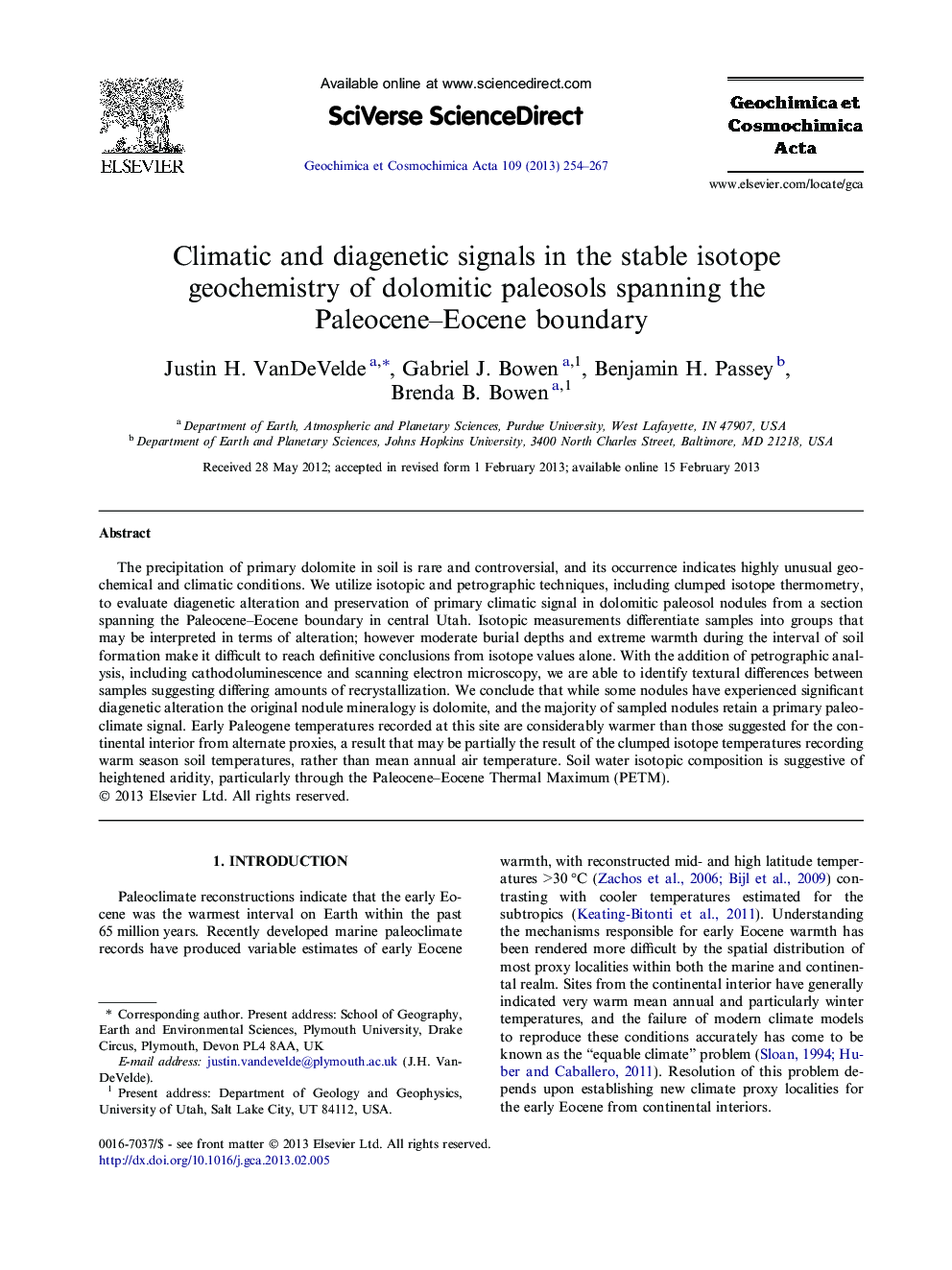| Article ID | Journal | Published Year | Pages | File Type |
|---|---|---|---|---|
| 4702442 | Geochimica et Cosmochimica Acta | 2013 | 14 Pages |
The precipitation of primary dolomite in soil is rare and controversial, and its occurrence indicates highly unusual geochemical and climatic conditions. We utilize isotopic and petrographic techniques, including clumped isotope thermometry, to evaluate diagenetic alteration and preservation of primary climatic signal in dolomitic paleosol nodules from a section spanning the Paleocene–Eocene boundary in central Utah. Isotopic measurements differentiate samples into groups that may be interpreted in terms of alteration; however moderate burial depths and extreme warmth during the interval of soil formation make it difficult to reach definitive conclusions from isotope values alone. With the addition of petrographic analysis, including cathodoluminescence and scanning electron microscopy, we are able to identify textural differences between samples suggesting differing amounts of recrystallization. We conclude that while some nodules have experienced significant diagenetic alteration the original nodule mineralogy is dolomite, and the majority of sampled nodules retain a primary paleoclimate signal. Early Paleogene temperatures recorded at this site are considerably warmer than those suggested for the continental interior from alternate proxies, a result that may be partially the result of the clumped isotope temperatures recording warm season soil temperatures, rather than mean annual air temperature. Soil water isotopic composition is suggestive of heightened aridity, particularly through the Paleocene–Eocene Thermal Maximum (PETM).
